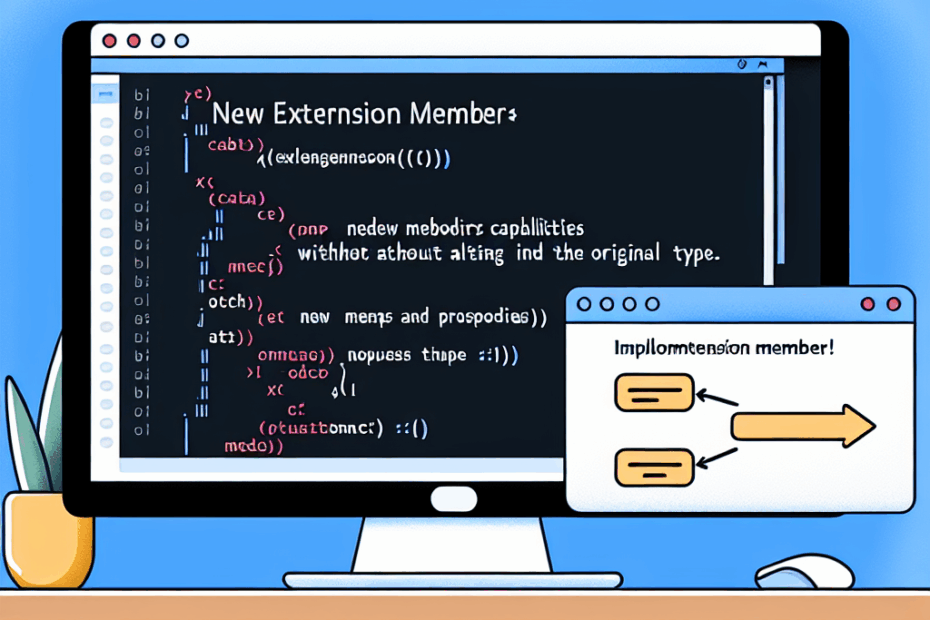“`html
What’s New in C# 14? A Simple Explanation
Hey everyone, John here! Today, we’re diving into something called C# 14. Now, don’t worry if you’ve never heard of it. Think of C# (pronounced “C sharp”) as a language your computer uses to understand instructions, like how you use English to understand a recipe. C# 14 is just a newer version of that language, like a new edition of your favorite cookbook with some updated recipes!
This new version brings in something called “extension members.” It sounds complicated, but stick with me!
Extension Members: Adding New Tricks to Old Things
Imagine you have a toy car that you really like, but it’s missing a cool spoiler. Extension members are like being able to magically attach that spoiler without having to take the car apart or build a whole new car. In the computer world, it means programmers can add new features to existing “things” (called types) without messing with the original code. This is super useful!
For example, C# 14 lets developers add new ‘methods’ to existing types. Lila, do you have any questions about this?
Lila: Um, what’s a ‘method’ in this case, John?
That’s a great question, Lila! Think of a method as an action or a verb. It’s something you can *do* with the “thing.” For example, if the “thing” is a shopping list, a method might be “add item” or “remove item.” So, extension members let you add new actions to things you already have, even if you didn’t create those things yourself!
Why is this useful?
- Adding features to things you don’t control: Sometimes, programmers use code libraries (think of them as collections of pre-built tools) that they can’t change directly. Extension members allow them to add extra functionality to these tools without having to copy and paste the original code.
- Keeping things clean and organized: Instead of creating a whole new version of something just to add a small feature, you can simply “extend” it. This keeps your code cleaner and easier to understand.
Static Extension Methods, Instance and Static Extension Properties – What?!
Okay, this might sound like a mouthful, but let’s break it down. The update adds “static extension methods” and “instance and static extension properties”. Don’t panic, Lila, I’ll explain!
Lila: I’m panicking a little bit, John! What do all of those words mean?!
Haha, no worries, Lila! Let’s tackle this step by step:
- Static vs. Instance: Think of “static” as something that belongs to the general idea of something, while “instance” is a specific example of that thing. Imagine a “Dog” is the general concept (static). Your pet dog, Fido, is an *instance* of a Dog (instance).
- Methods vs. Properties: We already talked about methods – they’re actions. Properties, on the other hand, are characteristics or attributes. Think of a car. A method would be “start the engine.” A property would be “color” or “number of wheels.”
So, a “static extension method” is an action you can perform on the *general idea* of something, while an “instance extension property” is a characteristic you can add to a *specific example* of something. In simpler terms, they’re just different ways to add new features, either to the overall concept or to individual items.
An Alternative Way to Write Extension Methods
The article also mentions that C# 14 introduces a new way to *write* extension methods. The old way still works perfectly fine, so you don’t *have* to change anything. But this new way is just another option, like choosing between using a pen or a pencil – both get the job done!
The cool thing is that this new syntax (that’s just a fancy word for “way of writing”) is consistent with the new kinds of extension members. It helps keep everything looking neat and tidy.
A Long Time Coming
Apparently, creating these extension members wasn’t easy. The folks at Microsoft tried out a lot of different designs before settling on the current one. They wanted to make sure it was easy to use, didn’t break existing code, and felt like a natural part of the C# language. It sounds like they put a lot of thought into it!
When Can I Use It?
The full release of C# 14 is expected to arrive with something called .NET 10 (think of it as a big collection of tools and libraries for C#) in November 2025. So, it’s still a little ways off, but it’s something to look forward to!
My Thoughts
I think this is a really neat update! Extension members seem like a powerful way to make code more flexible and reusable. It’s all about making a programmer’s life easier, which is always a good thing.
Lila: As a beginner, it still sounds a bit confusing, but I can see how adding new features to existing things without changing them would be super helpful. It’s like adding extra levels to a video game without having to rewrite the whole game!
This article is based on the following original source, summarized from the author’s perspective:
C# 14 introduces extension members
“`
